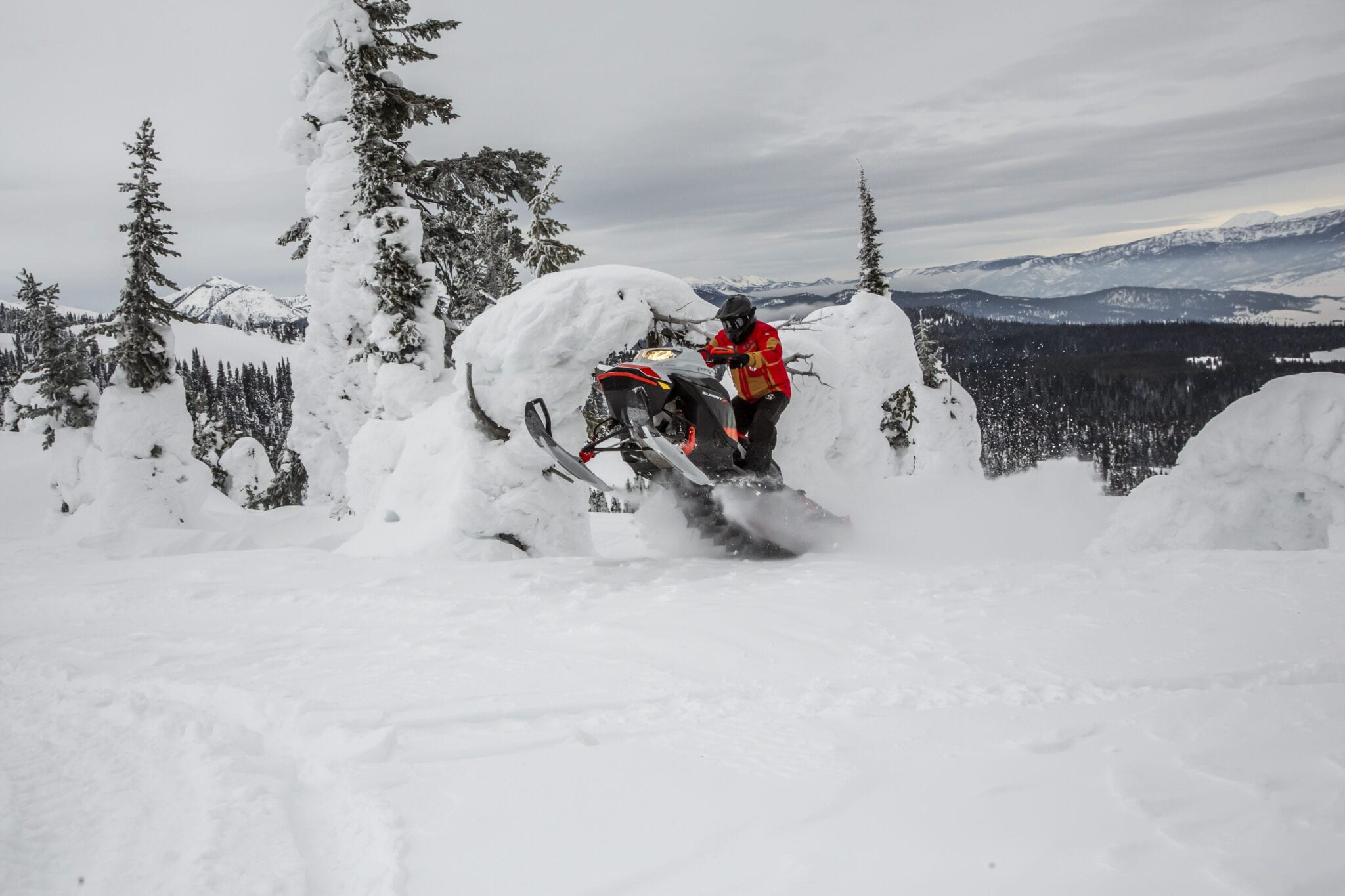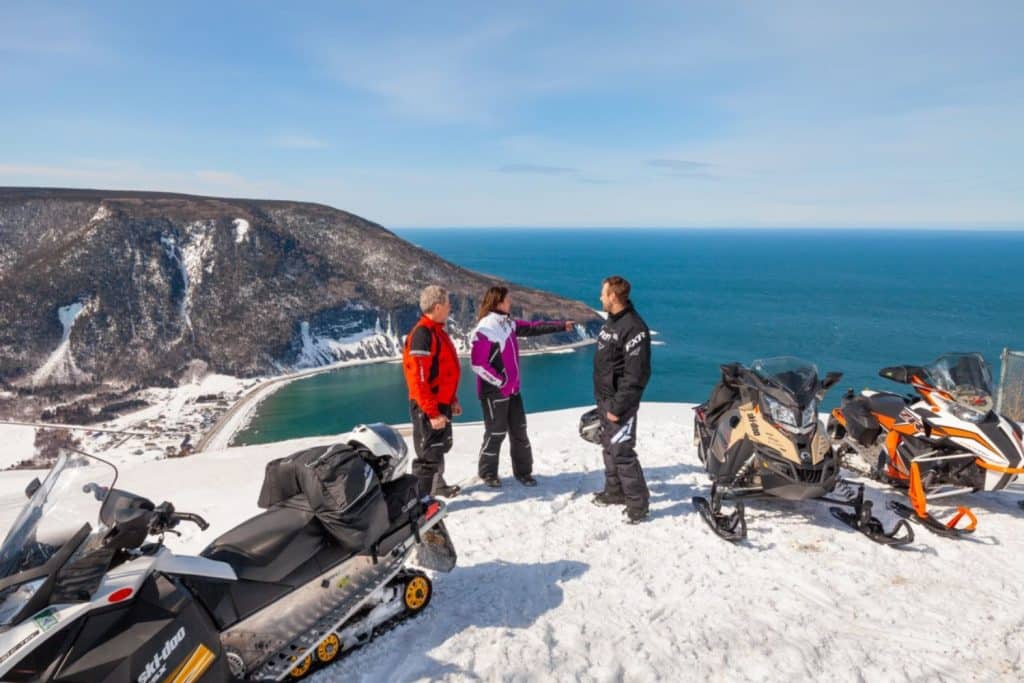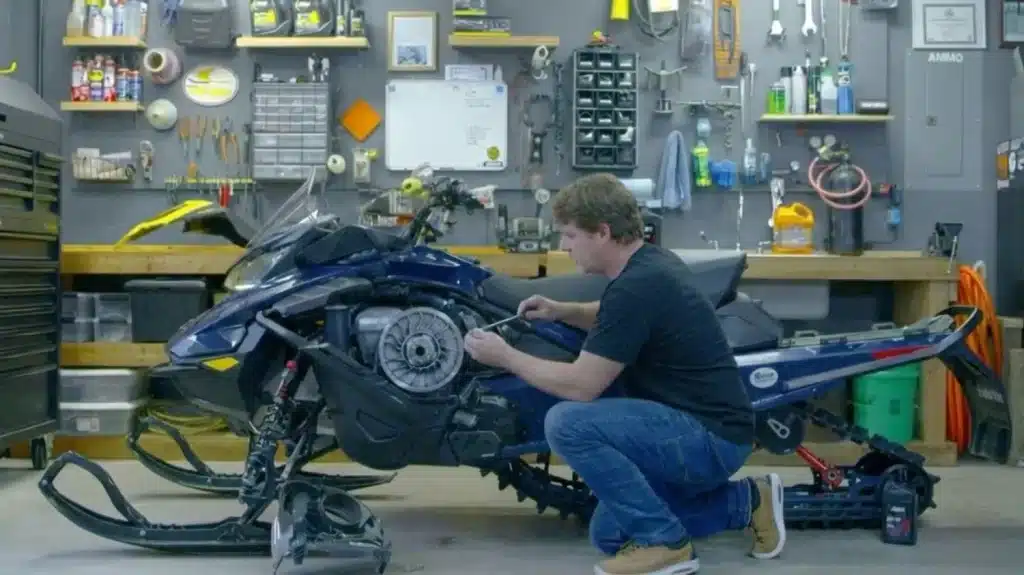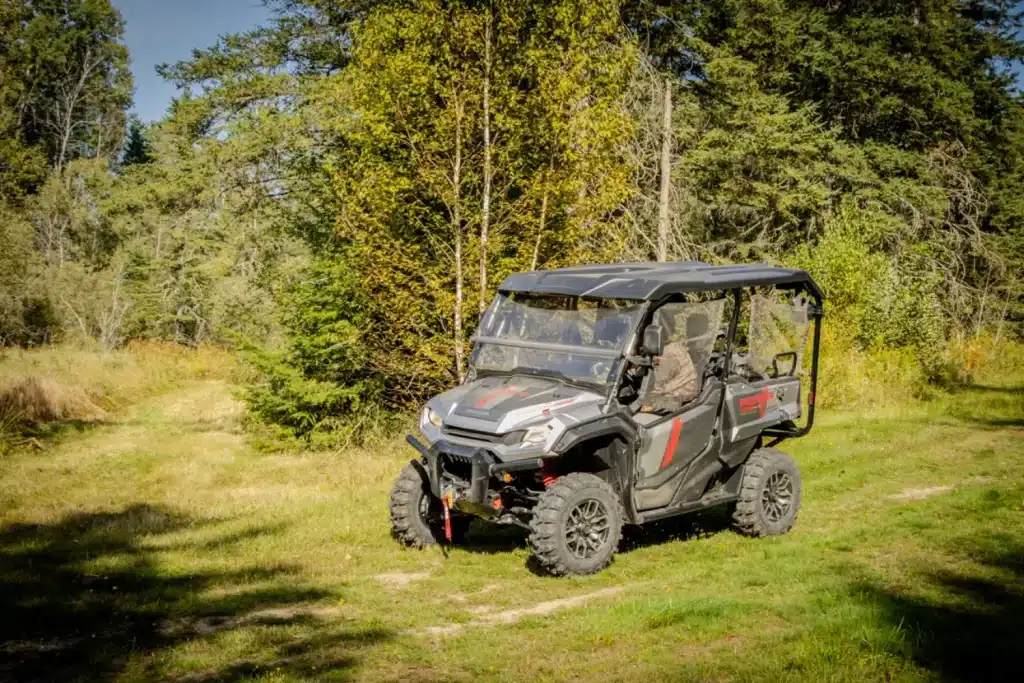The biggest news of the last decade for mountain snowmobiles is without a doubt the very first 2-stroke turbo engine delivered as standard by Ski-Doo. The 2021 Ski-Doo Summit 850 E-TEC Turbo is an exceptional engine that off-road enthusiasts have been waiting for for several years.
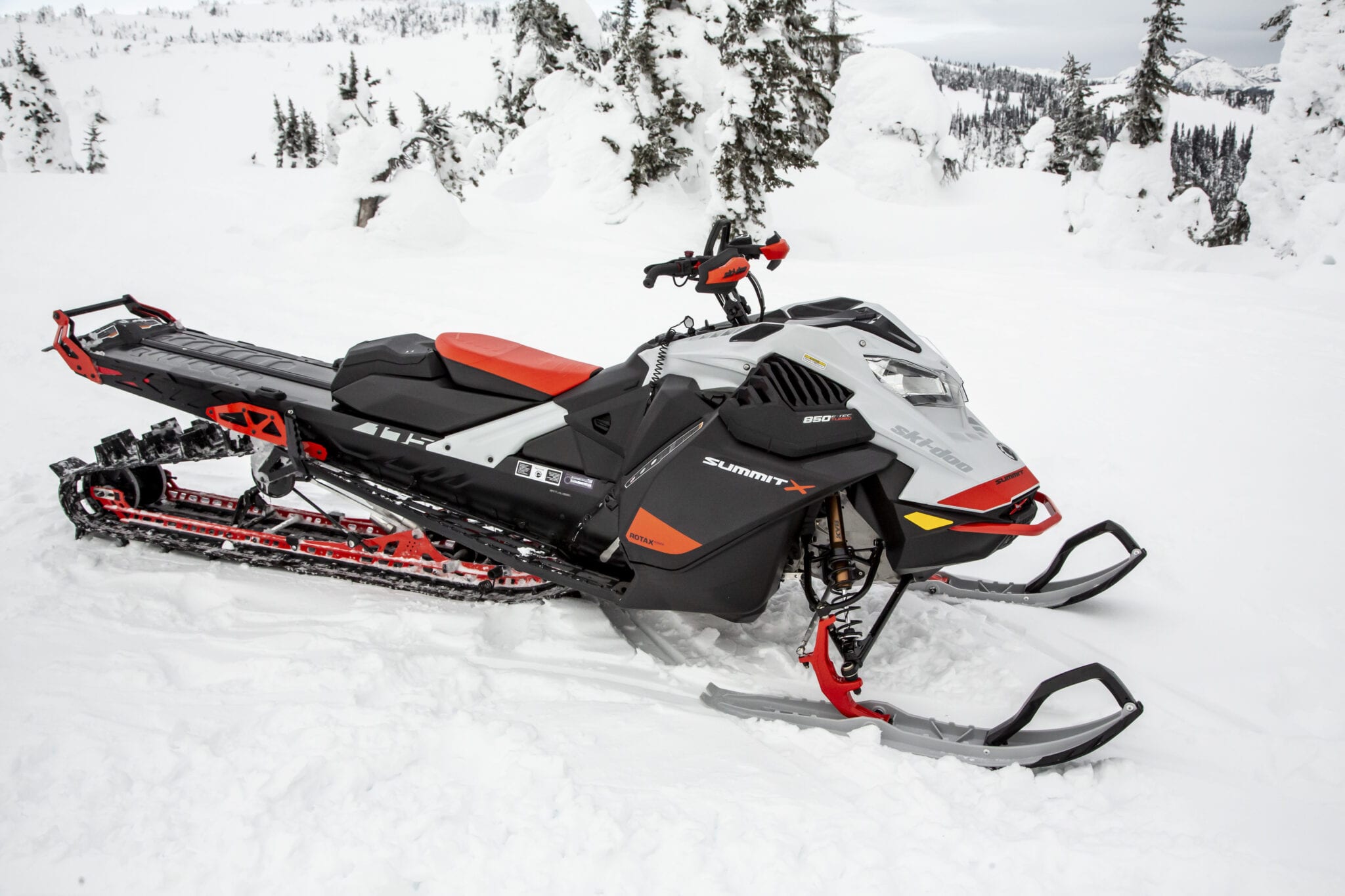
Off-trail snowmobiling is mostly done in the mountains and therefore at altitude. This is where adding a turbo makes sense! It’s simple: since naturally-aspirated engines “lose” their power at altitude due to the density of the ambient air, the turbo compensates for this effect by increasing the pressure at the engine’s air intake. Thus, the 850 E-TEC Turbo engine gradually makes up for the drop in power of a naturally aspirated engine as it climbs in altitude, until it provides 40 HP with its maximum 4 psi. An innovative plenum system combined with an electronic servo-control system controls turbo pressure very effectively and, above all, limits lag when the throttle is pressed to a minimum.
With this turbocharged engine, the 165 HP power will be maintained up to 8000 feet of altitude. At this altitude, we usually notice a 30% drop in power. To help you understand the difference… If you have an 850 E-TEC, you will get about 115HP at 8000 feet compared to 165HP at sea level. So you will have the power output of a 600cc engine with an 800-850cc engine in your hands. So, if you plan to ride on the highest peaks, Ski-Doo’s turbo mechanics offer you the possibility to stay ahead of the competition with a constant power. Here is a picture that illustrates the work of the turbo at different altitudes in reference to well known places in the world of off-trail snowmobiling.
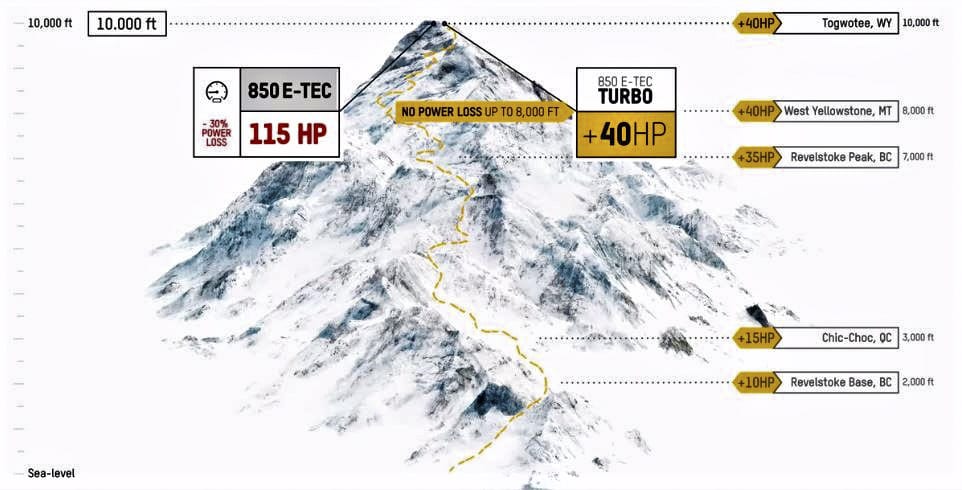
Driving Impressions
I had the chance to try the Summit 850 E-TEC Turbo a few times in different situations and also in locations that allowed me to compare performance at various altitudes. To begin, I’ll talk about my test in Quebec, which was my first experience with it. Fortunately, a storm brought a nice 40 cm layer the day before to allow us to push the Summit Turbo to the maximum. We started the beast and the first observation was that the addition of the turbo changes the sound slightly, but the engine response to acceleration is maintained at low altitude. This was my biggest fear that the turbo engine would introduce a “lag” compared to the naturally aspirated version. And to my great pleasure, there is none thanks to the simple but ingenious use of the plenum with a valve. The plenum is that “big plastic bowl” at the air intake that you can see on the engine picture.
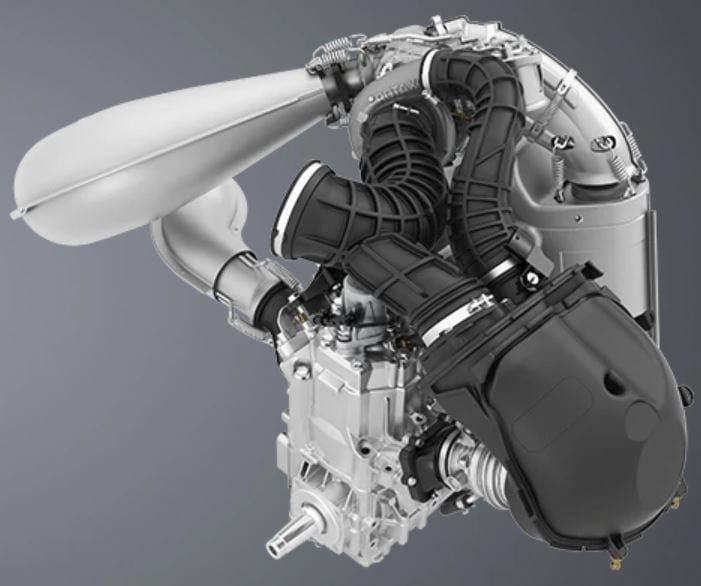
Another very important aspect is that the turbo adds weight to the mechanics, but this has been countered by the new lightweight hood that removes no less than 6 pounds. And as the folks at Ski-Doo say, a “big 6 pounds” since it was saved high in relation to the snowmobile’s center of gravity. When you ride the turbo version of the Summit, you don’t feel the weight difference and what you know about the light steering and very good handling has been preserved.
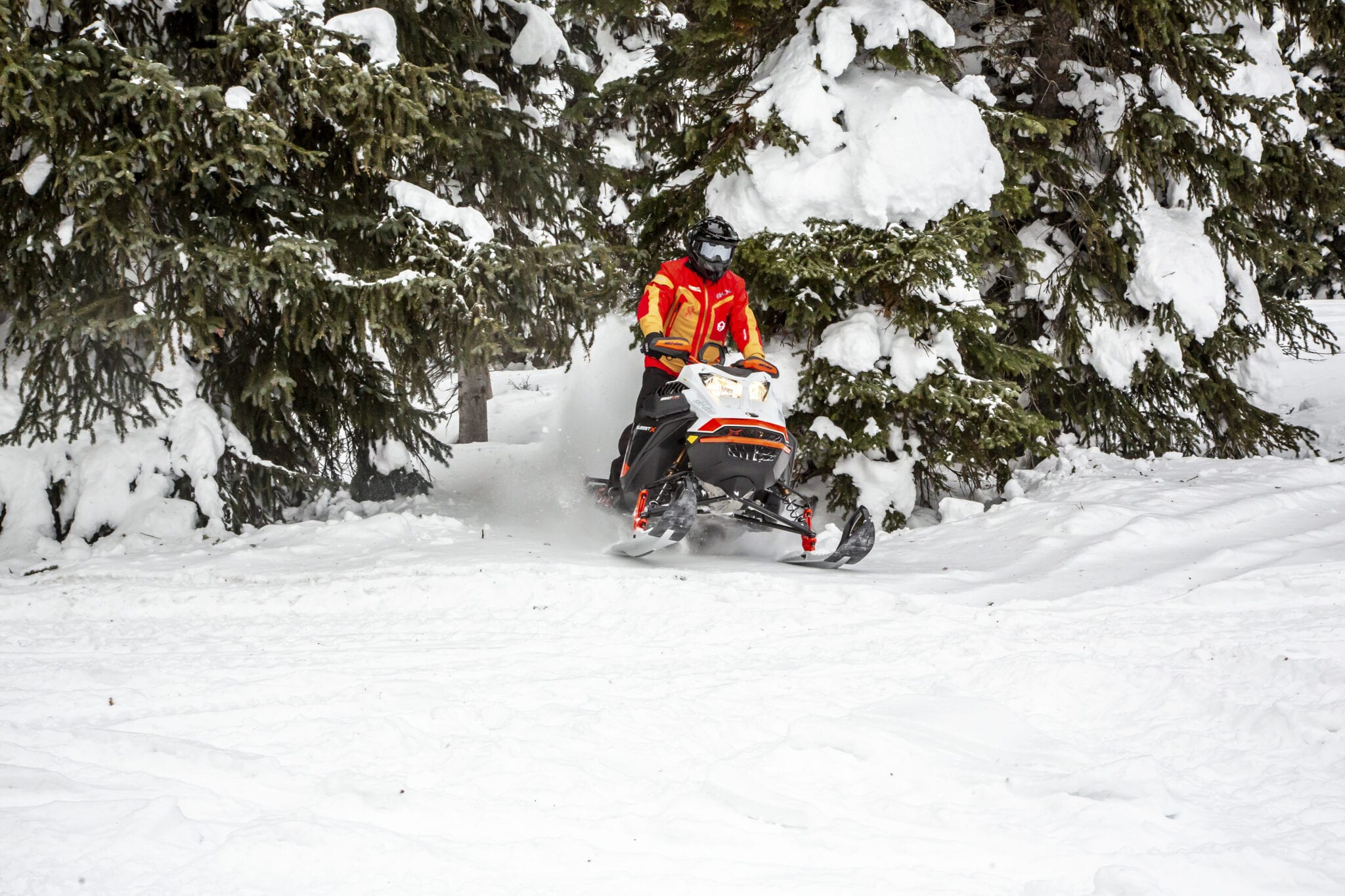
Riding the engine for a few hours at sea level, I noticed that the sound of the 850 E-TEC Turbo is very comparable to that of the naturally aspirated engine except for a small hiss and the pressure release sound. Even at low altitudes, there is a certain turbo sound that can be heard. And we like it! We feel that the power range is somewhat different with more powerful mid-range speeds. However, at sea level, we don’t really feel the need for such a mount vs. a naturally aspirated engine for the price difference. So, for the Quebec market, the turbo version of the 850 E-TEC is not so adapted… Unless you’re going to drive to the highest peaks of the province. In the Chic-Chocs in Gaspésie, for example. That’s where you can really feel the difference compared to a naturally aspirated engine. A difference that amounts to about 15HP with the altitude of the Chic-Chocs close to 3000 feet.
The place where I had the most fun riding the 850 E-TEC Turbo was in Montana, at the Snow Shoot for 2021 snowmobiles. So, I had the chance to try several models equipped with the 850 E-TEC Turbo engine and especially to try it in an environment at altitude. To give you some context, the altitude in West Yellowstone, Montana is 6,500 feet and it can easily reach 8,000 feet in the surrounding mountains. When riding in such an environment, the air density is lower and 800/850cc snowmobiles see their power diminished by more or less 30%… If we go back to what we know, it is the equivalent of a 600cc 2-stroke engine. The difference is huge and that’s why people were investing huge amounts of money in a turbo system, even though these systems had their share of problems with reliability and delays when activating the gas.
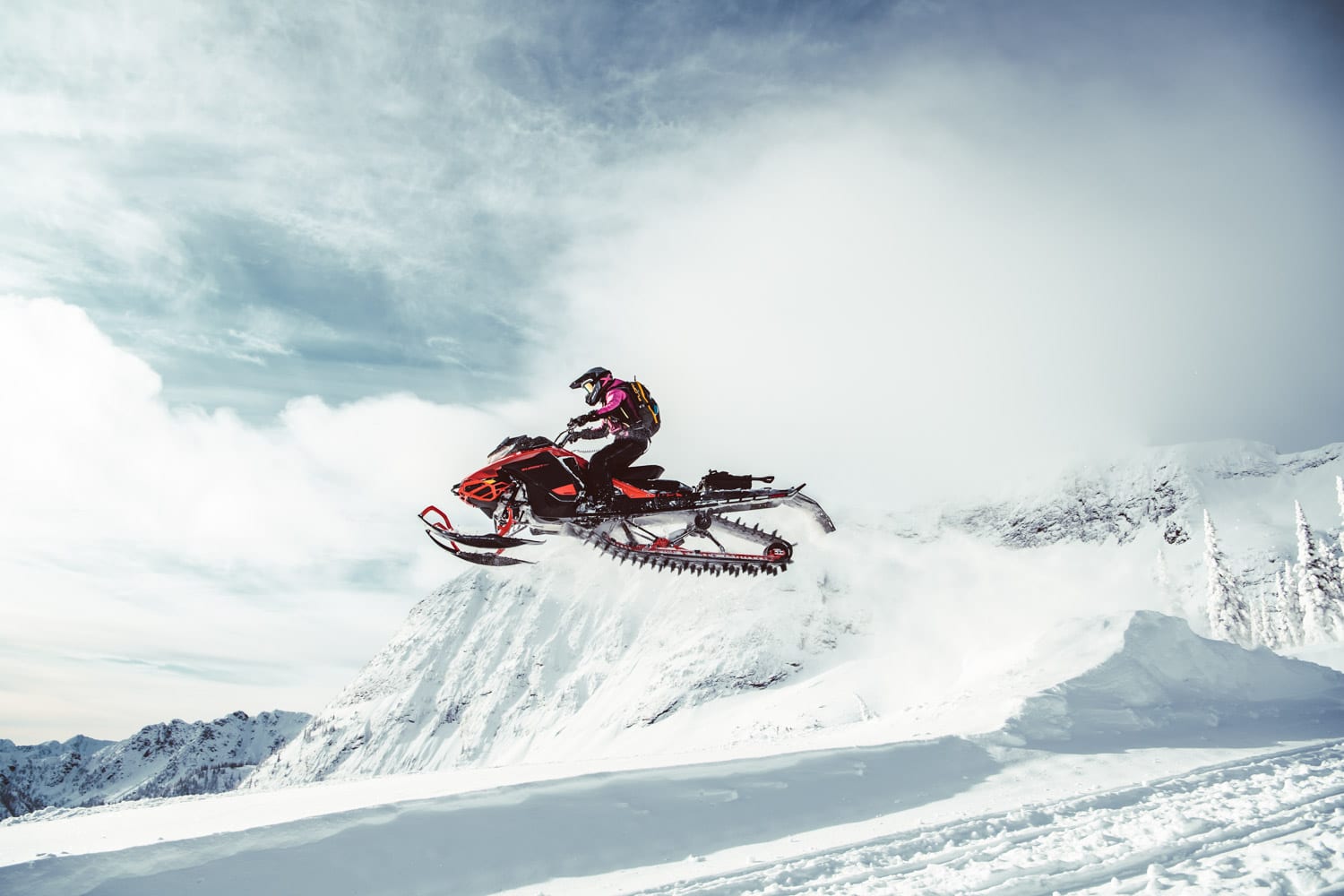
Now, off-road snowmobile enthusiasts can turn to the Summit 850 E-TEC Turbo. From the many hours I’ve ridden it, I can confirm that the performance is worth every extra dollar needed to get a turbo vs. a naturally aspirated engine. You can tell right away that the turbo has all the power it needs because the other 800/850cc naturally-aspirated engines seem “muffled”. To a point where we pass them without too much effort while climbing a mountain… And that while having the skis in the air with an impressive ”wheelie” to sort of taunt them.
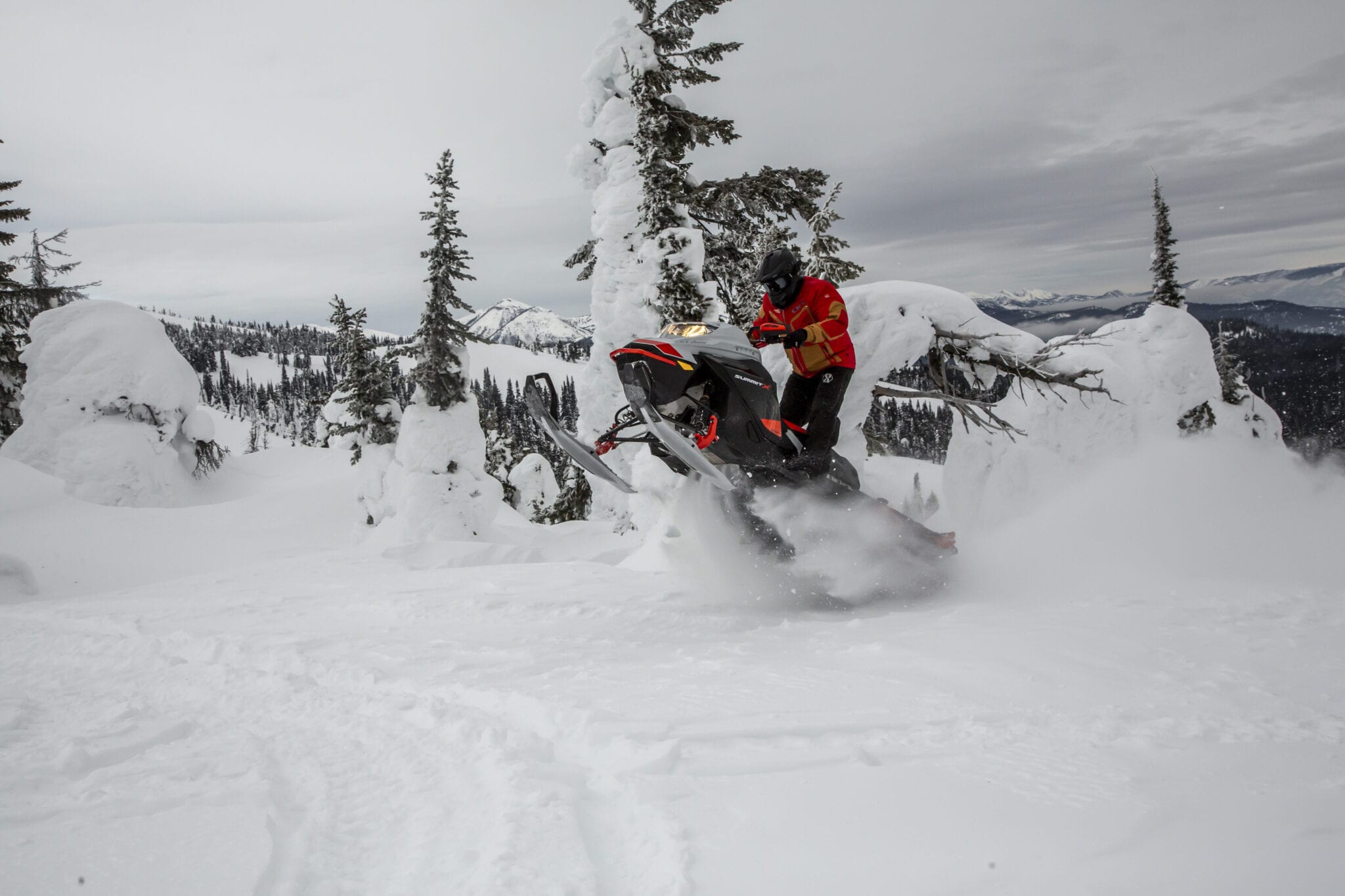
The more time you spend with the Summit 850 E-TEC Turbo, the more you can thank Ski-Doo’s engineers for their excellent work, as you don’t feel any lag when you hit the throttle. The engine’s response is as immediate as what we know from the non-turbo version. This is a huge difference compared to almost all turbo aftermarket packages. What creates the magic of this no-lag engine is the innovative plenum and dual inlet air intake system that allows ambient air to enter directly when the throttle is pressed. Then, when the turbo has built up a pressure higher than the outside (atmospheric) pressure, a valve blocks to let the compressed air from the turbo come in. And the most impressive thing is that it all happens in a fraction of a second with this relatively simple and especially effective technology on a 2-stroke engine.
Voilà ce qui nous procure toute la puissance disponible de 165 HP et on conserve la réponse géniale du 850 E-TEC. Une autre chose importante à savoir : les composantes mécaniques du moteur 850 E-TEC sont conservées en très grande majorité sauf quelques petites modifications ici et là, par l’ajout du turbo. On peut donc s’attendre à la même fiabilité du moteur que l’on connait depuis quelques saisons maintenant.
If I lived in the high mountains, this is definitely the machine that would be waiting for me in the garage since it offers the best of both worlds. That is to say: Full 165 HP power at altitude with the reliability of a manufacturer’s bike. Everything you need to go out and enjoy the abundant snow in a mountainous setting as far as the eye can see. That’s where the Ski-Doo Summit 850 E-TEC Turbo shines and gives you the best feeling!
Interesting fact to know…
There are already “after market” kits to increase the power of the mechanics above the original 165 HP. We are talking about modifications that easily push the power beyond the 200 HP mark. However, the manufacturer’s warranty will no longer be valid at that point and the manufacturer uses many ways to ensure that he does not pay if this is the case. On the other hand, when the warranty is no longer valid, I am convinced that we will see many Summit Turbos with monstrous powers… Everything you need to push the limits of off-road snowmobiling.
Conclusion – 2021 Ski-Doo Summit 850 E-TEC Turbo Test
In conclusion, the Ski-Doo Summit 850 E-TEC turbo is an exceptional mountain machine that is capable of mind-blowing performance given the power it retains at altitude. However, it is more or less to be considered in Quebec since the altitudes are relatively low in general and the purchase price is higher to obtain the same performance as a naturally aspirated engine, i.e. the Summit 850 E-TEC.
The 850 E-TEC Turbo was developed for people who drive where the high altitude takes a lot of power and where the turbo compensates efficiently for this lack… Like in Montana or in British Columbia!

